A wheel bearing is an important part of your vehicle’s power system, which allows the wheels to spin smoothly. Like every other mechanical component, wheel bearings can wear out over time, and this could result in serious issues if not looked after. Catching the warning signs of a worn-out wheel bearing early will save you from expensive repairs and hazardous driving conditions. In this article, I will discuss the 10 common symptoms of a bad wheel bearing and how you can spot them so you stay up-to-date and active regarding the maintenance of your vehicle. Acquiring knowledge regarding these signs is crucial to maintaining the smoothness and security of your rides, whether you’re a car lover or just trying to ensure the safety of your car.
What are the most common symptoms of a bad wheel bearing?
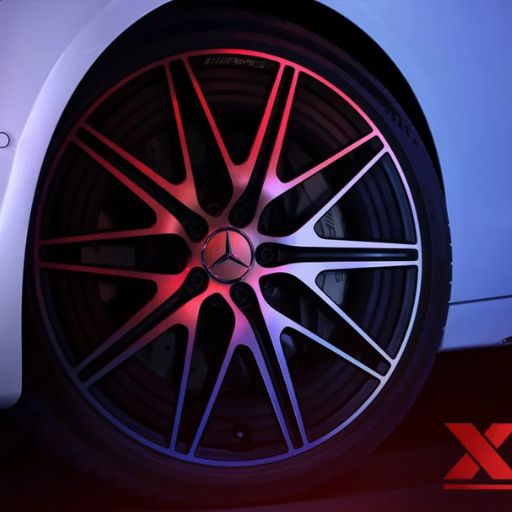
In the event of a defective bearing, the most prominent signs that can be seen include harsh sounds that emerge from the tires, such as humming, misunderstanding, and roaring, uneven wear of tires, steering wheels that feel too loose or vibrate too much, and a strong sense of wobbling on one side of the vehicle or pulling to one side while driving the vehicle. In some cases, you may notice a failed ABS, difficulty in braking, or unwanted amplification of noise while driving. It is critical to fix these issues as it pertains to your safety and the car’s longevity.
Unusual noises: grinding, humming, or whirring
any strange sounds that include humming, whirring, or squeaking are almost always the first indications of a vehicle’s bad wheel bearing. These sounds usually vary with vehicle speed and can be more pronounced during turns when stress is applied to the wheel bearing. If these signs are detected early on, replacing the faulty bearing can avert any further damage to the other parts, saving you time and money.
Steering wheel vibrations
Whenever you sense the steering wheel shakes, it could be a sign of a bad wheel bearing. Sometimes, when the bearing is overly worn down, it can lead to a tendency for the wheel to shake, and therefore, the steering wheel shakes, too. This especially happens at various speeds. It may also worsen the problem of vibrations due to uneven tire wear. Resolving this problem as early as possible reduces the chances of inflicting more harm and makes driving safer.
Uneven tire wear
Worn-out tires can raise some serious concerns, especially if it is due to uneven wear. In my experience, a broken wheel bearing is usually the reason for such deep-seated problems. This is because a damaged wheel bearing can create an imbalance, which leads to uneven wear around the tires. I have witnessed such cases of imbalances, which have made a huge difference in the attributes of the tires. Therefore, whether the situation is the bearing, the alignment, or the suspension, fixing the cause of the problem is extremely important in rectifying the problem and preventing uneven wear of the tire treads. In order to avoid such issues of wear and more serious concerns of safety, I usually recommend regular inspections and maintenance of the tires.
How can I identify a failing wheel bearing while driving?
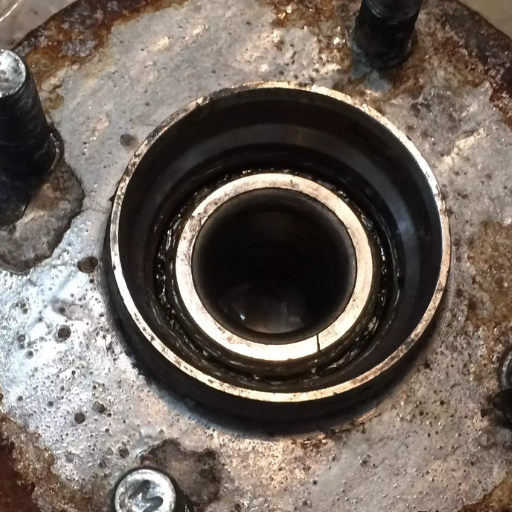
An irregular wheel bearing can be spotted from a failing one as it gives off signs during movement. Let’s say you hear a buzzing or screeching sound. This is an indication of a failing wheel bearing, which can get worse if the speed is increased or if the vehicle is turning. Moreover, you might also feel that the steering wheel is wobbling or shaking and that also indicates at failing wheel bearing, other signs like rough tires or motor difficulty while turning would also come into play if the situation worsened. If these situations are not controlled on time, damage can spiral out of control while also putting safety at risk.
Increased noise when turning
People often ask me why they hear increased noise when they turn. Well, I can tell you that it means your wheel bearing has begun to wear out or is damaged. When the weight of the vehicle shifts, weight becomes added to a damaged bearing and that is why the sound becomes louder. However, all of this is quite misconceived since the noise itself is not the issue. The issue is that such wear and tear on your bearing hinders normal functioning and can eventually lead to complete wheel failure. So my advice to you is to consult a technician for the issue as soon as possible when you experience unusual sounds while turning because you and the safety of your vehicle can be at risk.
Steering feels loose or wandering.
Loosening or wobbling of the steering wheel means there are faults in the steering mechanisms, the parts of the suspension, or the alignment systems. Care should be taken to look for trimmed tie rods and ball joints or failures in the steering rack, which will greatly affect the driveability and the safety of the vehicle. Rectifying this at once helps to maintain accurate control and also protects more vital parts of the car from being damaged.
ABS warning light illumination
If the warning light of the ABS (Anti-lock Braking System) illuminates, there is a possibility that the system has flagged some sort of issue. When discussing the performance of ABS, I can say that there are a few key parameters you’ll want to consider to determine the cause:
- Brake Fluid Levels – A faulty brake light may be caused by low brake fluid. The system needs sufficient pressure to function, otherwise that is what happens. If the brake fluid is low, always refill the brake fluid reservoir using the type recommended for your vehicle.
- Wheel Speed Sensors – As the name suggests, these devices measure the speed of each wheel and allow the ABS system to keep the wheels from locking during violent braking. Dirty, damaged, or faulty wheel speed sensors may be responsible for illuminating the ABS light. Often, these sensors can be fixed by being inspected and cleaned.
- ABS Module or Fuse – Signals coming from wheel speed sensors are sent to the ABS module. If the module or some other fuse is defective, then the ABS system may be turned off, and the light will turn on. Check the fuses, and if needed, check the module with a specialist.
- Wiring Issues – Corroded wires interfere with or break communication to and from the ABS sensor and the module. Observe wiring that may be visible around the wheels for any tear or corrosion.
- Fault Codes – Vehicles these days store fault codes when the ABS system encounters an error, modern vehicles. In this case, using an OBD-II scanner to get these codes can lead right to the problem, thus saving time and effort.
Also, note that if you are in doubt, it is strongly recommended that you seek professional advice. It is quite safe to drive the car when the ABS is deactivated, though it is likely to decrease the overall level of safety while driving.
What are the dangers of driving with a bad wheel bearing?
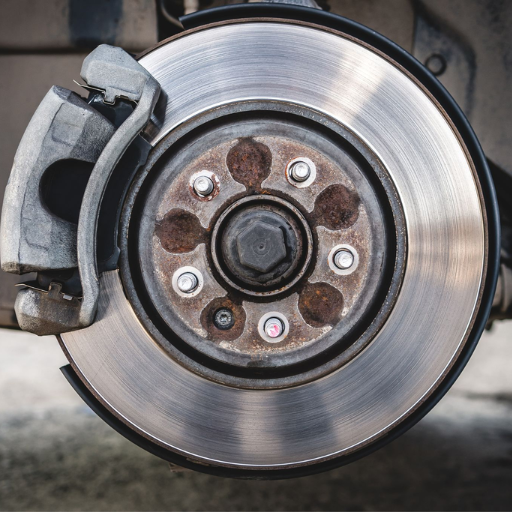
Bad wheel bearings impact the mechanics of a car and can lead to many hazardous situations. Not only that but there is also a risk of vehicle collisions and an increasing chance of a traffic accident due to bearing impairment on axle steering capabilities. It may also result in erratic tread wear and loud sounds in addition to potentially separating the wheel from the body altogether. If any other problems arise, just disregard bad axle bearings, which would be good for you in the first place. Treat this concern as a priority, as it will be beneficial for your mobility. The vehicle will subsequently be able to function properly.
Risk of wheel detachment
I can gladly confirm in the automotive industry that the risk of a wheel coming off is associated with a failed wheel bearing and it is one of the most severe consequences. Lets say a bearing fails, but before that, it has reached the level where it has begun to fail, this point is crucial as it weakens the link between the wheel hub and the axle. This makes it possible for the wheel to come loose while you are driving, and in the worst-case scenario, it just drops off completely. If left unresolved, this is highly risky as it can lead to disastrous outcomes. Lowering the likelihood of such an outcome relies on recognizing the trouble sign early enough, like weird sounds coming from the vehicle or a noticeable vibration.
Compromised steering control
Let me tell you this: the lost ability to maintain steerage due to issues emerging from a faulty wheel bearing is a worrying factor, and it is one of those components that I always check for comprehensively. Surely, a faulty wheel bearing affects the proper execution of the rotation of the wheel, but it also can lead to uncontrolled or unsteady steering while driving the vehicle. Here are the parameters I look at to assess this issue in detail:
- Steering Responsiveness: Frequent steering input gives you a feeling that you have a lot of control over your vehicle. The wheel bearing allows the steering to be responsive. But as the bearing starts to fail, you will notice less responsiveness or a feeling of slack in the steering column.
- Vehicle Stability: A broken or compromised wheel bearing can cause the wheel to rotate in an uneven manner, which causes instability in the vehicle, and drivers experience this while driving at high speeds or taking sharp corners.
- Noise and Vibrations: One of the most common or early signs is grinding, humming, or growling noise, which depends on the vehicle’s speed. These noises and the steering wheel shaking are sure signs that soon enough you will feel your steering control is about to fail.
- Alignment Issues: In layman’s terms, a wheel bearing that has worn out is able to easily move the wheel out ofthe plan, out of the axis, which will make it hard for you to drive straight and turn without making adjustments all the time.
These points have to be addressed with the utmost care. If you notice any of these indicators, there is no harm in getting it professionally inspected. Ensuring that all the wheel bearings will have no defects is not only a concern of safety but also an enhancement of the general efficiency of the vehicle. Never forget to be careful – the earlier the problem is found, the better it shall be !!
Potential damage to other components
Your wheel bearings enable the smooth spinning of your tires. I understand individuals who say that wheel bearings only affect the rotating elements. However, I’ve seen cases when there are problems with the axle and the hub assembly. For instance, if wheel bearings are damaged, they will definitely overheat, which may subsequently result in altering the shape of modules surrounding them, such as brake calipers. Upon facing these issues, tire wear on the outside edges also becomes a problem, and the load on the suspension system is increased, which results in a decreased lifespan of the suspension system. These issues should however, be rectified early on to avoid escalation that can be much more damaging – you will be spending less time and cash and also allow your car to be fully usable without the fear of it failing.
How long can I drive with a bad wheel bearing?
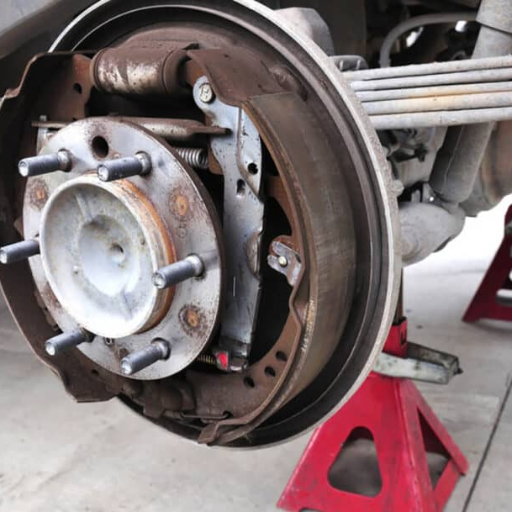
Rough driving with a wheel bearing is dangerous and should not be attempted unless absolutely necessary. While one can technically cover some distance, if the wheel bearing is in a bad state, please know that using the vehicle further can cause damage to the axle, hub assembly, and suspension of the car, which are all crucial elements. In addition to that, it also drastically heightens the chances of a car accident due to a decrease in wheel stability. For the sake of securing safety and reducing repair costs, it is best to get a bad wheel bearing checked and professionally repaired or replaced as soon as possible.
Factors affecting wheel bearing lifespan
This is the life expectancy of the wheel bearing. Based on my experience in the industry, several key factors come into play. First and foremost is the quality of the bearing itself— high-quality materials and proper engineering lead to longer-lasting bearings. Shortly in line, proper application is also important as well; mere slight inaccuracies during application can cause damage within the bearing. In addition, periodic care, such as keeping the seals closed to avoid lubes outflowing and dirt and water entering, is also important. Finally, if the bearing is used in a severe environment with very poor roads, active potholes, or high loads, the service life of the bearing is greatly reduced. Lastly, some driving habits like high torque starts, full acceleration and deceleration, and tight cornering can also deteriorate the bearings’ life span. Addressing these factors will maximize the life expectancy of the wheel bearings, which in turn guarantees a safer overall ride.
Risks of prolonged driving with a failing bearing
I would advise against driving with a failing bearing, and the following is the reason for this. An important aspect is your vehicle and safety are heavily compromised the moment a bearing begins to fail. Let me go into detail one area at a time.
- Wheel Alignment and Control
Your steering and ability to control the vehicle can be seriously affected by a damaged bearing, which could cause your wheel to shake. Such an alignment of the wheel can result in unsteady steering, which could be dangerous while driving a car, especially at higher speeds.
- Heat Build-Up
The spindle bearings reduce the friction by letting the wheel revolve. When they fail, the amount of friction significantly increases, causing a lot of heat at the wheel hub assembly. Eventually, this leads to extensive damage to the neighboring components like the axle, brake discs, and sometimes the wheel.
- Brake Performance Issues
A bearing that is near failure is putting additional load on the brakes. Because of the defective bearing, the spin of the wheel may not be balanced up, which in turn affects the braking system effectiveness, increasing the time taken to stop the car or, worse, the car experiencing partial brake system failure.
- Tire Wear and Damage
A defective bearing can cause the wheel to spin unevenly or the parts around it to be unsymmetrical, which can cause unusual wear on the rubber tires. Not only does this decrease the tire’s life expectancy, but it also increases the possibility of blowing the tire out while the vehicle is in motion.
- Complete Wheel Detachment
In case the bearing fails, there is a slight chance that the wheel would completely detach itself from the vehicle which results in an exceedingly dangerous situation. Such mechanical failures can result in accidental harm to the vehicle and even include bodily harm to other people.
As well as making these factors worse, extended driving on a damaged bearing can result in significant expenses for repair because of the chain reaction that destroys other components. This is why, if while driving, you notice any vibrations or any scratching and humming around your wheels, you must take care of it right away. It is for your safety and for the better functioning of your car!
What causes wheel bearings to go bad?
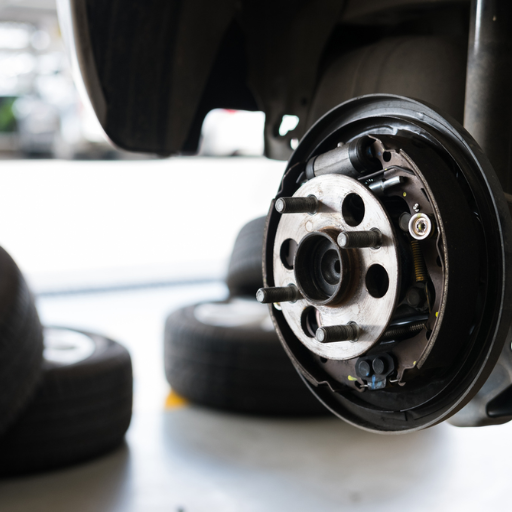
wheel bearings fail mostly due to wear and tear, dirt and debris, or lack of grease. With time, the constant circular movement coupled with the weight placed on the part causes damage, especially after rough elements such as potholes, big rocks, or bumpy roads. Other elements such as dust, mud, water, or even food particles make the grease in the assembly break down and cause rust. Furthermore, low oil levels or oil that has lost its quality causes a lot of friction and heat to accumulate on the bearing, which, in the end, results in the part being rendered useless. Proper maintenance and being careful not to drive aggressively can really help prolong the life of your wheel bearings.
Contamination and lack of lubrication
Prevention should always take priority to minimize contamination and minimize the chances of insufficient lubrication. It is very important to closely examine the wheel bearings for any sign of damage or wear out. Check also if the seals are good to prevent dirt, water, and other elements from washing into the assembly. Use non-composite cheap and car lubricating grease when operating. Such grease reduces friction and heat generation, thus increasing the period of operation of the bearing parts. With good sealing of the bearings and proper maintenance like lubrication, one would be able to reduce the chances of having a bearing fail prematurely.
Impact damage and improper installation
impact damage and poor installation can be blamed for wheel bearing problems. When a vehicle drives over a pothole, a curb, or other forms of impact surfaces, it applies enormous force on the bearings and surfaces, leading to cracks, deformation, or dislocation. Not seated bearings and under/over torquing feigns equal disaster- allow either weight to wear the bearings at an uneven rate or cause them to overheat. To minimize these dangers, I stress careful handling during installation as well as following the recommended procedures. Being thorough with the details at these steps is crucial to ensuring the reliability of the wheel bearings in the long term.
How much does it cost to replace a wheel bearing?
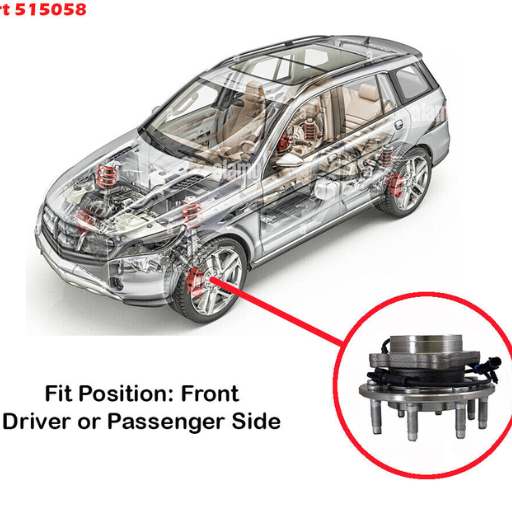
The expense that comes with replacing a wheel bearing tends to be determined by the type and model of a vehicle, as well as labor fees in your vicinity. In most cases, it is reasonable to spend anything from $150 to $400 per wheel. In the case of certain luxury or imported cars, the price to replace can go higher. Of course, it’s always good to ask a local mechanic for an estimate to know the approximate cost restoration will require for a specific type of vehicle.
Factors influencing replacement costs
there are certain factors that will affect the pricing of your wheel bearing, which I will break down as follows:
- Type of Vehicle: The car you drive has a huge influence on the cost, for instance. An expensive or performance-based car usually has specialized wheels or bearings which increases its driving costs compared to standard models.
- Quality of Parts: The price, in this case, is instead pertinent to the type of replacement part purchased. Primarily, what needs to be remembered is that OE bearings or Original Equipment Manufacturer bearings are very expensive because they fit your car’s specifications. Aftermarket products are cheaper as well, but they should be bought with the quality factor in mind.
- Labor Rates: Where you are getting the job done also decides how much labor is going to cost. Car manufacturers usually demand high prices as they possess exclusive tools and knowledge, whereas independent contractors or mobile mechanics are less expensive. Labor costs also differ per place, with cities costing higher than rural areas.
- Vehicle Design: The vehicle and wheel bearing shape also have a direct correlation to how much time replacing the wheel bearing is going to take. For instance, take a pressed-in bearing as an example. It is more complicated and time-consuming to interface a pressed-in bearing than to interface a bolt-on bearing.
- The extent of the Repair: Apart from the bearing set, hub assembly, driveshaft, and most ABS sensors that are frequently replaced together, if a wheel bearing failure leads to damage on other parts, additional costs will apply.
Keeping all these points in perspective makes the quoted amount for your vehicle easy to comprehend. For sound advice, I always suggest that you see a qualified mechanic and talk to him about these factors. That way, you can rest assured that the services and parts used to get you back on the road are reliable and trustworthy.
DIY vs. professional replacement
As you’re contemplating whether to replace your wheel bearing yourself or use a professional service, It is essential to gauge the pros and cons of both options relative to your circumstances. The following outline strives to aid you in making a well-informed choice:
- Skill Level
Changing wheel bearings requires a bit more experience and a good knowledge of mechanics. Some good tools might require you to be a little familiar with the use of a hydraulic press, a bearing puller, or a torque wrench; otherwise, seeking assistance might be the best option. Although, a novice might find this process somewhat inconvenient and risky.
- Specialized Tools
Bigger-sized machinery or automobiles that have a lot of pressed bearings require quite a lot more tools, such as a Bradley bearing press, snap-ring pliers, an impact wrench, etc. Renting or purchasing is, most importantly, abuse, which can generate a lot of risk to the bearing itself and to nearby components used. It’s good to be skilled because professional mechanics have all these tools available to them and also know how to handle these tools.
- Time Commitment
Changing the bearing wheel, according to an experienced person, can take anywhere between 1-3 hours, based on the type of car. But if a DIY person wants to change it, it could take up to a few weeks, considering how carefully it needs to be handled. If you believe your time is short or your car needs a repair and change, then a professional change would be best suited.
- Safety Considerations
When doing a simple repair yourself, one can make a mistake and end up leaving a loose wheel, for instance. Professionals always ensure that all these parts are properly installed and pressed within the desired specifications. The last point is also valid for the assertion that the vehicle can be driven.
- Cost Efficiency
While being able to repair something yourself might save money on labor, don’t forget to factor in the price of tools, rentals, replacement pieces, and, more importantly, any damages caused by defects. Nevertheless, professional services do seem to be pricey at first, however they offer certain guaranteed services on parts and labor which is there to provide satisfaction.
- Extent of Damage
In the event of a wheel bearing failure when hub or ABS sensor gets damaged as well, make sure to contact a professional, they would likely help you. The proficient would make it much easier to evaluate and fix extra damage.
Can I prevent wheel bearing failure?
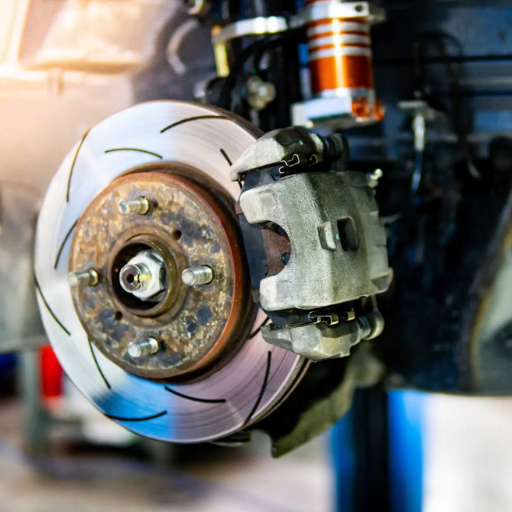
Although it is tough to avoid wheel bearing failure due to it being a result of consistent friction due to rotating parts, we can always prolong its occurrence with proper maintenance. Make sure to check the wheel bearings often, grease them properly, and avoid soggy and rough areas if possible. Oiling and controlling heat will deal with wheel bearing wear and tear. Maintaining your vehicle and solving issues helped with reducing premature wheel bearing failure.
Regular maintenance tips
I entirely agree; I can say that taking care of the wheel bearing can easily be done by maintaining the car and paying attention to how the vehicle acts. I personally recommend to listen to non-standard sounds pay attention to the humming or grinding during turns and other situations, these are usually early signs of a wheel bearing failure, if these signs are ignored then repairs would be more costly.
Regular Maintenance Tips
- Inspect Wheel Bearings Periodically
Make sure to look into excessive movement or abrasions in the wheel bearings every time routine maintenance or an inspection is performed. It is always best to prevent progressing any further into problems than to try and find a solution afterward.
- Avoid Overloading
Unreasonable amounts of weight can and will damage wheel bearings. These components will needless to say fail if the recommended weight limit provided by the manufacturer is surpassed.
- Keep Seals Intact
Contamination leads to more serious problems, such as failures. Always ensure the areas that are at risk of getting contaminated are in good condition to prevent moisture, debris, and dirt from damaging the components.
- Monitor Tire Alignment
Bearings can be damaged by misaligned tires! By making sure your tires are aligned, this problem is avoided, and wear and strain become uniform in distribution.
- Stay Alert to Warning Signs
Suspicious sounds or changes in the way the car handles should not be taken lightly. Solving these problems at an early stage can save you money and worry in the future.
Proper driving habits to extend bearing life
For the most optimal outcomes in the lifetime of a wheel bearing, proper driving habits are to be maintained. This includes avoiding sudden acceleration, making abrupt turns, or skidding out, as these habits cause undue stress to the bearings. Rather, try to steer with a gentler and smoother grip to avoid such as much as possible. Apart from that, avoid driving through potholes or rough surfaces as much as you can, as it leads to stress and vibrations on the bearings, which can lead to impairments in the long term. Consistently ensuring even pressure and inflation on your tires will also help avoid uneven forces from getting applied to the bearings. All in all, a considerate and wise way of driving can lead to benefits such as a longer lifetime of your wheel bearings and enhanced functioning of the vehicle itself.
Reference
- Kelley Blue Book: How Do I Know if I Need a Replacement?
- Quora: Signs that your wheel bearings are going bad
- Meineke: 6 Signs of a Bad Wheel Bearing
Frequently Asked Questions (FAQs)
Q: What are the most common symptoms of bad wheel bearings?
A: The most common symptoms of bad wheel bearings include unusual noises (such as grinding, humming, or whirring), steering wheel vibrations, uneven tire wear, and a loose or wobbly feeling when driving. These signs may indicate that your wheel bearing is bad and needs to be replaced.
Q: How can I identify a bad wheel bearing by sound?
A: Wheel bearing noise is often a key indicator of a problem. Listen for a grinding noise that increases with vehicle speed, especially when turning. A humming noise that changes pitch when you accelerate or decelerate can also be a sign of worn bearings. If you hear these sounds coming from one wheel, it’s time to check for a bad wheel bearing.
Q: What are the signs and symptoms of wheel bearing failure in the steering?
A: Signs of wheel bearing failure in the steering include a loose steering wheel, vibrations in the steering wheel, and a feeling of play in the bearing when turning. You may also notice that your vehicle pulls to one side (left or right) while driving straight. These symptoms indicate that your wheel bearings may need to be replaced.
Q: Can a bad wheel bearing cause uneven tire wear?
A: Yes, a faulty wheel bearing can cause uneven tire wear. When a wheel bearing is bad, it can allow for excessive movement in the wheel, leading to uneven distribution of weight and pressure on the tire. This can result in irregular wear patterns, which may be more noticeable on one wheel compared to the others.
Q: How do wheel bearings fail, and what causes them to wear out?
A: Wheel bearings fail due to various factors, including normal wear and tear, contamination from water or dirt, improper installation, or damage from impacts. The constant friction and heat generated during vehicle operation can cause the metal ring and rolling elements inside the bearing to deteriorate over time. Harsh driving conditions and lack of maintenance can accelerate this process.
Q: What should I do if I suspect my wheel bearing is bad?
A: If you suspect your wheel bearing is bad, it’s important to have it inspected by a professional mechanic as soon as possible. They can perform a thorough check for a bad wheel bearing and determine if it needs to be replaced. Continuing to drive with a worn bearing may lead to more severe damage and potentially dangerous driving conditions.
Q: How often do wheel bearings need to be replaced?
A: Wheel bearings are designed to last for a long time, typically 85,000 to 100,000 miles or more. However, this can vary depending on driving conditions and vehicle maintenance. It’s important to pay attention to the symptoms of a failing wheel bearing and have them checked regularly during routine maintenance to ensure they’re in good condition.
Q: Can a bad wheel bearing be confused with other car problems?
A: Yes, the symptoms of a bad wheel bearing can sometimes be confused with other issues. For example, a grinding noise might be mistaken for brake problems, while vibrations could be attributed to tire imbalance or CV joint issues. That’s why it’s crucial to have a professional diagnose the problem to determine if your wheel bearing is bad or if there’s another underlying issue.
